Make Earth Day Every Day
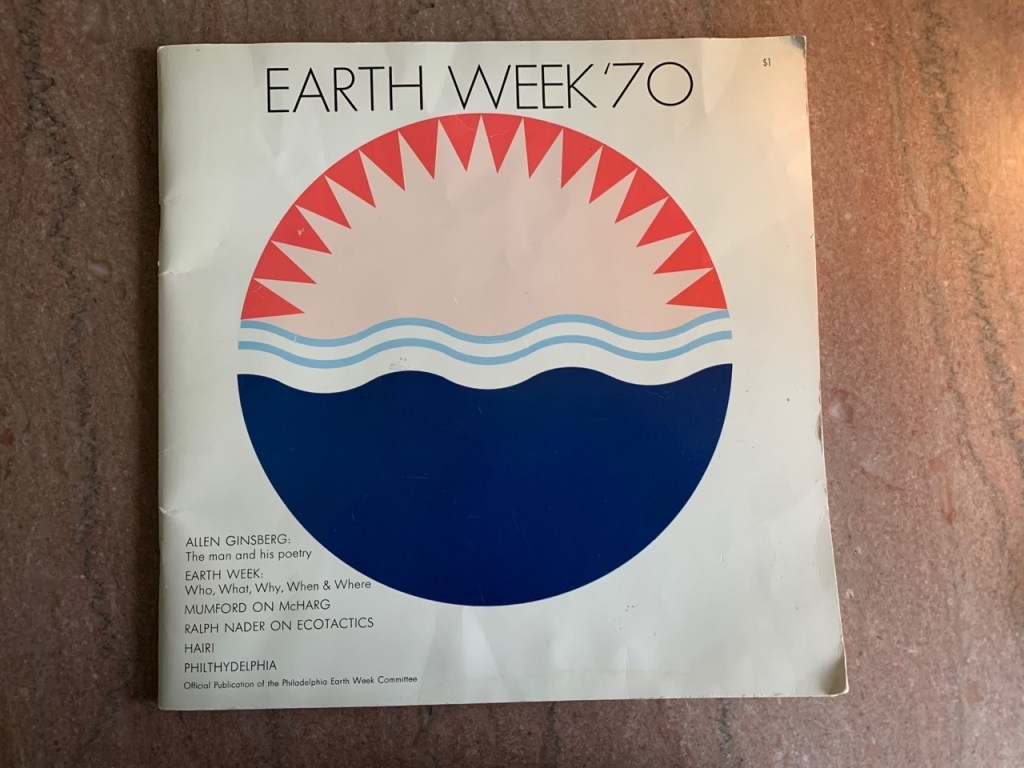
April 22 — Earth Day. I was leafing through an oversized magazine a friend gave me when she retired entitled,Earth Week ’70,published in 1970 as the Official Publication of the Philadelphia Earth Week Committee. At only 48-pages in length, it contains op-eds; artwork by adults and kids alike; an Earth Week Public Events calendar (April 16-22); an interview with the poet, Allen Ginsberg; statements from participants such as Senator Edmund Muskie, former Governor of Maine and its first Democratic Senator (elected 1964), and the primary sponsor of five bills on environmental improvement (a huge deal); environmental activist and four-time presidential candidate, Ralph Nader whose work birthed many key pieces of legislation in consumer protection; Senator Hugh Scott, a moderate Republican and environmentalist who served eight terms in the House as a Pennsylvania representative and another three terms in the Senate, eight years of which he was Senate Minority Leader; and celebrated author, professor, and former Episcopal chaplain, Alan Watts, to name a few.
Events included the signing of the Declaration of Interdependence, a poetry reading by poet, author, and Beat Generation team leader, Allen Ginsberg, performances by the Native American musical group, Redbone, and the Broadway cast of Hair; even a Seder reading. If the black and white photos in the magazine tell the whole story, Philadelphia, or Philthydelphia as the magazine’s authors called it, was a hot mess: smog so thick you couldn’t see from one side of the city to the other, even if you were standing on Billy Penn’s hat; pipelines running along the river’s edge, joined by trash and other debris (at least not plastic yet); and bellowing smoke stacks sending yet more particulate matter into the filthy air.
The first Earth Day, founded by Senator Gaylord Nelson, environmentalist, conservationist, consumer advocate, small business proponent, and peace-lover, was held on on April 22, 1970 as a teach-in to raise awareness of America’s long-standing environmental issues. Eight years before in 1962, Rachel Carson released her groundbreaking work, Silent Spring, decrying the overuse of pesticides, insecticides, and herbicides; on June 22, 1969, the Cuyahoga River in Cleveland caught on fire for the 13th time; and in 1970, smog clouded not just the Los Angeles skyline, but cities across the country. In 1970, there were only 3.6 billion of us on the planet compared to almost 8 billion today which means, the problems are only getting worse.
The evidence of environmental degradation splattered across our nation by the end of the 60’s propelled 20 million Americans to attend Senator Nelson’s Earth Day party. Their efforts paid off: on December 2, 1970, President Richard Nixon created the Environmental Protection Agency, leading to the expansion of some of our most important national legislation like the Clean Air Act (originally passed in 1963 and amended in 1970), and the Clean Water Act (originally enacted in 1948 as the Federal Water Pollution Control Act, and reorganized and expanded in 1972). Last year, EPA celebrated 50 years of following its mission of protecting human health and the environment for all 328 million Americans, not just those of us who hug trees and care about bugs and bunnies.
The first Earth Day was a pivotal time in American history. Just this week we revisited the horrendous shooting of four college students on the Kent State campus in Ohio by members of the National Guard. Since the beginning, environmentalism has been intertwined with the anti-war movement of the 70’s. Whether that has hurt or helped the environment’s cause is anyone’s guess, but it reminds me that time is not linear but circuitous, that it may not repeat, but it definitely rhymes, and that if we don’t correct the mistakes of the past, we are destined to repeat them. Today we’re trying to leave a 20-year war in Afghanistan. History echoes.

Why do we still need Earth Day? Here are a few reasons: we are on the verge of a 6th mass extinction; according to the CDC, one in 12 people has asthma, a condition that’s on the rise in the U.S.; per- and polyfluoroalkyl substances, known as PFAS and dubbed “forever chemicals” have been found “in the blood of virtually all Americans,” in our drinking water, and most recently, on Mount Everest; and for me, the most chilling, by 2050, there will be more plastic in the ocean than fish.
Earth Day is an origin story. The fervency surrounding the environmental issues on display during Earth Week in 1970 mirrors the fervency surrounding the intractable problems of today. With so many of our systems in disrepair, sometimes it seems easier to list the things that do still work. And while environmentalism in the U.S. may have started in earnest in 1970, it’s roots survive today thanks to groups like Philly’s own Global Water Alliance, and many others that work tirelessly for clean air, clean water, clean soil, and to cure environmental inequities.
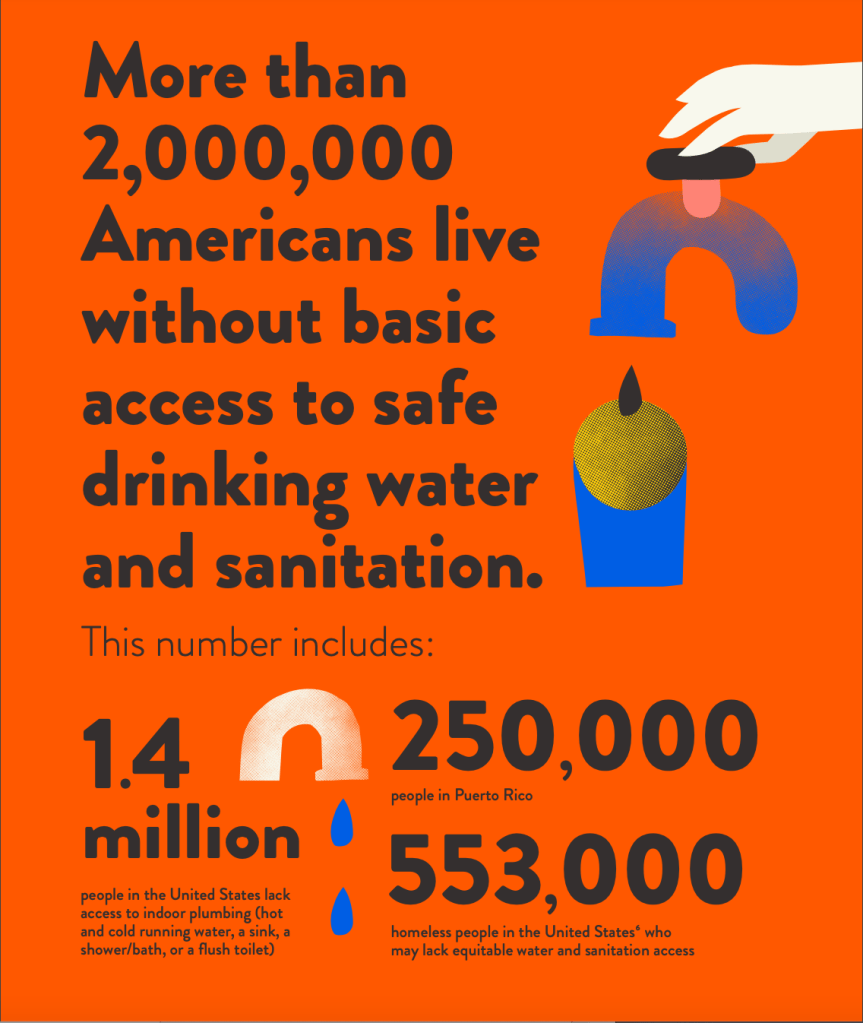
Native Americans were the first stewards of this land. Today, those living on tribal reservations are among the two million people in the U.S. who don’t have running water or indoor plumbing. It’s always been time to add equity to our conversations about the earth, water, air, and access to resources that are common to us all, but not always readily available to everyone. Let’s not make this a one-day-a-year event. Rather, let’s revise our thinking, make a commitment to community, and choose to take decisive action starting now.
Today 97% of scientists agree that we humans are causing climate change. As a society, we need to take steps to arrest it before the planet gets any hotter; an increase of one of more degrees Fahrenheit could be the cause of the single biggest mass migration the world has ever seen. Even a couple degrees of warming will make places uninhabitable for billions of people. If you think a handful of countries have immigration problems now, wait until 3 billion people are on the move.
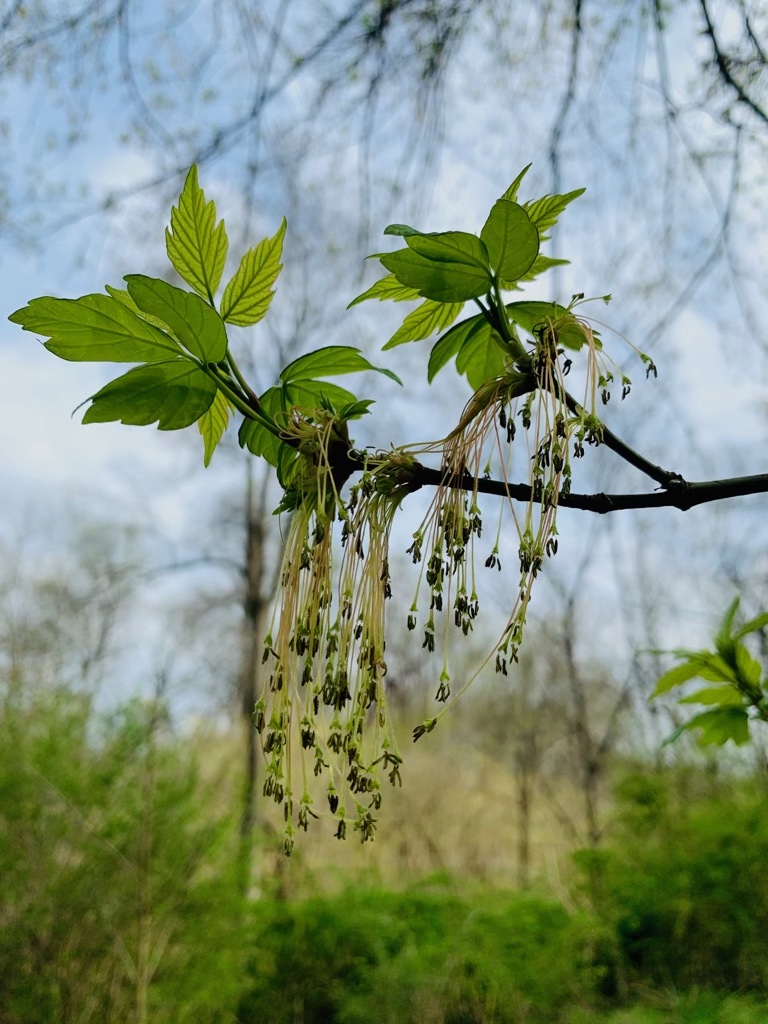
You will get no argument from me that today’s problems are ginormous, bigger than many of us can wrap our arms around, but now is not the time for cowardice, but strength, and foresight, and action, because if we ignore the problem’s of today, tomorrow’s environmental issues will make us long for the smog-filled days of the 70’s. This is the part of the movie where long-time enemies must join forces to fight the coming doom — aliens, King Kong, Thanos, empty seas, whatever we fear most — and hope that the sheer act of cooperation will buy us some grace.
To quote President Biden, “If we act now, in 50 years people are going to look back and say: ‘This was the moment that America won the future.’”
Let’s make Earth Day every day. There is no Planet B.
Before you go, here’s another fan-favorite from Redbone with a little dancing to get you going:

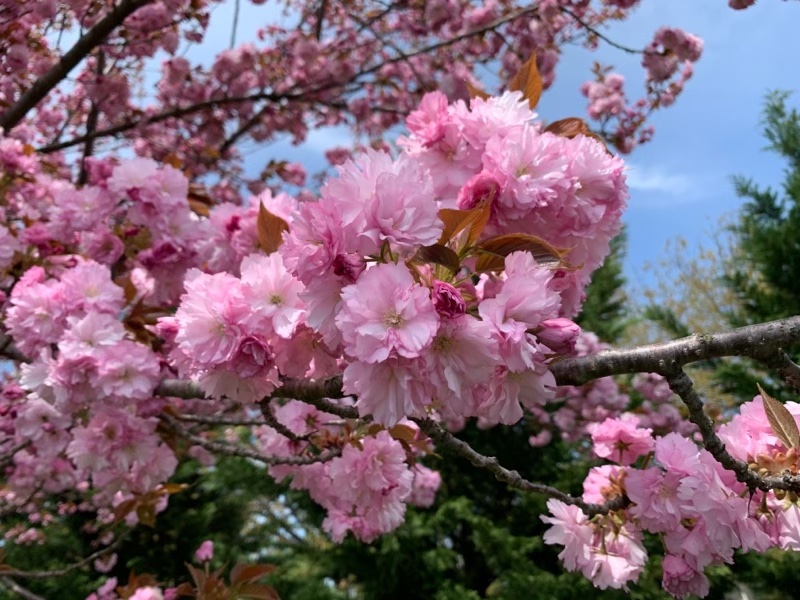






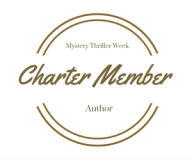




Epic post, Pam! Impressive research. History echoes, indeed – nice way of putting it.
LikeLiked by 1 person
Thanks 🙏 James! I’m glad you enjoyed it. 🥳
LikeLiked by 1 person
I find myself more and more annoyed at people who won’t do the simple stuff–stop using plastic bottles–and expect someone besides them to solve this problem. What is wrong with them!!
LikeLiked by 1 person
I know. We all need to do our part, Jacqui. 😘
LikeLiked by 1 person
That goes without saying! I always wonder what the hell is these: Earth day or Women’s day or Children’s day etc. They are all the main points which we had to care about every moment. Thank you, dear Pam, for another great article.
LikeLiked by 1 person
Truer words were never spoken, Aladin, but people forget what they have to be grateful for, unfortunately. 🙏😘🤗
LikeLiked by 1 person
This is a reality check of note 😦 … thank you for the beautiful Spring pics, just to help soften the blow a bit!
LikeLiked by 1 person
My pleasure, Amanda. Beauty amidst the destruction, eh?! 🤔
LikeLiked by 1 person
Hi Pam – that magazine must be so interesting to read … I’ve got Rachel Carson’s book here to read. we need to help the poor, rather than boost the rich … and we need to encourage all change that can be made when alternatives are in place. All the best – Hilary
LikeLiked by 1 person
Hilary, it’s amazing but that Earth Week magazine is selling on Amazon for $149 U.S.!😳🤪
LikeLike
Woo – how incredible … funny what comes around and around … !!
LikeLiked by 1 person
💐
LikeLiked by 1 person
Thanks Pam, what a cogent piece of context. It does boggle the mind but you’re so right that we need to bite this bullet and keep on biting it. It strikes me while on the subject of bullets that people often hope for a silver bullet to ‘fix’ this whereas this climate issue isn’t just fixed. Its a bit like an addict hoping to get better whereas what they have to come to terms with is they have to live with their addiction for the rest of their lives and manage it one day at a time. We need a global Planet Annonymous that we sign up to… ‘ My name is Geoff and its been x days since I last used non biodegradable plastic (insert your current polluting behaviour here)’. This has to be a mindset shift to any number of forever changes. Thanks Pam.
LikeLiked by 1 person
Geoff, I think you should be the U.K.’s Minister of Happiness because you can take any subject, no matter tragic or droll, and write something about it that makes me laugh. 😂 😆 A true gift! Thank you. 🙏 My name is Pam and it’s been weeks (minutes if I count microfibers in clothing!) since I used non-biodegradable plastic. 🤣
LikeLike
Thank you Pam. I’m happy to be your sponsor.
LikeLiked by 1 person
🙏👏❤️
LikeLike
I was happy to hear about the virtual conference today with President Biden, the Pope and Bill Gates – there is promise for tomorrow and I like that. I also like your comment that there is “no Plan B” – the more people that understand that Earth is not expendable, the better off we will be.
LikeLiked by 1 person
Thank you, Linda and that is sooo true!!😘
LikeLiked by 1 person
Pam, I am SO proud of you and your commitment to communicating about and engaging with environmental issues! You are an inspiration. I greatly appreciate the back story about Earth Day; thank you! A friend reminded me today of a memory of my Mother taking us to an Earth Day celebration at Haverford College in the mid-70’s. We tried deep-tried dandelion… an adventure for young teenagers. I wish you could of met my Mom; she would have loved you as much as I do. Keep up your great work!!
Monica Gilbert
LikeLiked by 1 person
Monica – thank you!! Your mom sounds like a delight! Not so much deep-fried dandelions!😂😳🤣 Miss you guys. ❤️to❤️🤗s!
LikeLike
Your two closing sentences are perfect. We are in a crisis. Urgent actions are needed.
LikeLiked by 1 person
Neil! I realized this morning that I forgot to include the musical links. They’ve been added now if you want a 70’s musical interlude. 😂🤗
LikeLiked by 1 person
Great post Pam – every day each person can do their bit. Thanks for the back story, very interesting. Have you seen the Netflix documentary- ‘seaspiracy’? Scary as all hell. Great photos ❤️
LikeLiked by 1 person
Oh my gosh, Susan, we decided to stop eating fish after seeing that movie. 😳🥵
LikeLiked by 1 person
An important message, and your spring pictures are gorgeous!
LikeLiked by 1 person
Thank you, my friend! ❤️🙏
LikeLiked by 1 person
The State of the Earth is going down with time. Thank you 🌍
LikeLiked by 1 person
Oh, let’s hope not!!
LikeLiked by 1 person
If we don’t take the chance at COP26 in 2021, it unfortunately will.
LikeLiked by 1 person
Fingers crossed 🤞 then!
LikeLiked by 1 person
👍
LikeLiked by 1 person
Great article!
LikeLiked by 1 person
Thanks, Bill!
LikeLike